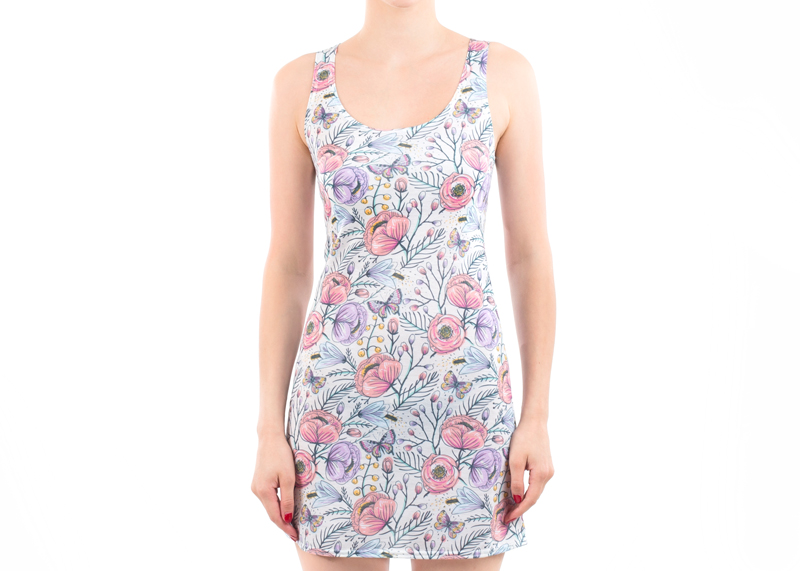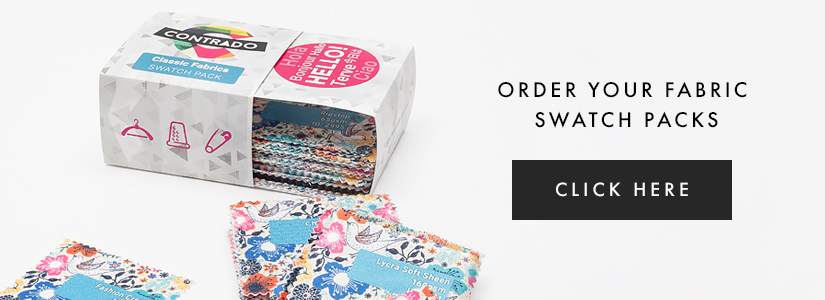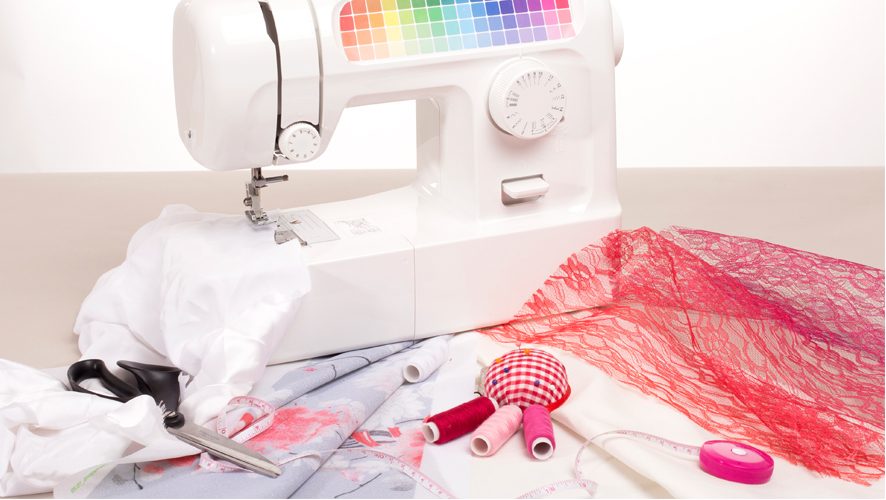Are you just starting to learn to sew?
Have you just taken up sewing and are looking for some tips to get started, and, most importantly, how to avoid those common sewing mistakes?
We’re sewing mad at Contrado. After all, we make everything by hand (and sewing machine), right here at our studio, and, over the years, we have worked with many sewers, some brand new and some seasoned professionals.
How to sew and avoid common sewing mistakes
When you are starting your sewing journey and just understanding how to sew, it is so easy to make sewing mistakes. Sometimes, it is the best way to learn. However, we want to help eradicate these mistakes, or at least, help rectify them, if they are made.
Just remember to practise, practise, practise and don’t give up if you do make a few errors. Practise makes perfect!
1. Measure twice, cut once
What’s the mistake? Inaccurate cutting of your pattern.
Make sure you align accurately with fabric grain lines. Lay your cloth on a flat surface, like a clean floor. If you place your fabric on a table, make sure parts of it aren’t hanging over the edge, as this may pull it out of shape. If you need to cut on fold, ensure the fold is exactly on grain. Always check twice that the pattern pieces are perfectly aligned with grainlines, then pin all around them, before cutting. Inaccurate cutting is one of the worst beginner sewing mistakes. By following these steps, you can easily avoid it.
2. Use your presser foot
What’s the mistake? Not using your presser foot properly.
The presser foot holds the fabric in place, so you can always stitch neatly, so make sure you use it. Forgetting to put the presser foot in the “down” position before you begin to sew will cause the material to jump around and it won’t “walk” backwards easily; you might get bunched up with your threads in a tangled mess!

3. Get the right tension
What’s the mistake? Not checking your tension dial or your bobbin.
Tensioning is a common complaint for sewers, and it is a tough skill to master, which even experienced sewers can struggle with. The tension dial does exactly what it says on the tin – it adjusts the tension on the spool of thread. Sometimes, when the stitching looks uneven or it is very tight on the top side, this can be a result of the thread tension. Before you begin fiddling with the tension settings, check that your bobbin is threaded properly. The bobbin should be threaded into the bobbin case correctly, with thread unspooling in the correct direction (usually anticlockwise). You can sew test fabrics first to check your tensioning is correct. We recommend taking note of your settings before you start trying to adjust tension dials.
4. Don’t forget about your seams
What’s the mistake? Sewing your seams the wrong side up and not pressing them.
If you are sewing clothing, then knowing about seams is vital! When sewing seams, you’re constantly working on the inside of your garment, and reversing. This can be a tricky move to get used to, but it is so important to make sure you sew seams on the correct side.
When using patterned textiles, remember to place patterned sides facing each other, because when you reverse, they will end up on the outside. Also, try and get used to pressing your seams as you go, before joining seams, and ironing your fabric before you get started. This will make your finished project look a lot more professional and reduces the risk of puckering. Bumpy fabric can also result in inaccurate cutting and sewing, which could all lead to a sewing disaster!
5. Gaping buttons
What’s the mistake? Not measuring yourself to get accurate buttonhole placements.
Buttons and buttonholes can be a tricky skill to master. If creating for yourself, an important tip is to ignore the buttonhole placement guides that come with a pattern, and measure yourself carefully, adjusting buttonhole position to the curves of your body. These guides are generally very standardised whereas our bodies are not, and buttonhole placement can often make the difference between having a shirt gape at the bust and having one sit perfectly flat. The same model applies to making clothes for other people. Get as many measurements as you can and then adjust buttonhole placement accordingly.

6. Get the right fabric for the job
What’s the mistake? Choosing the wrong fabric for your project.
Don’t get side tracked by the pretty, colourful fabrics, if they are not the right textiles for the job at hand! It can be very easy to be persuaded to use a certain textile, thanks to its colour, pattern, or style, but most patterns have suggested fabrics, which have been carefully chosen to best suit the structure of the finished garment. By choosing a fabric based on its aesthetics alone, you might not be able to complete your project.

7. Check your needle and thread
What’s the mistake? Choosing the wrong type of needle and thread.
When making most kinds of garments, you should use a 100% polyester, all-purpose thread. Make sure you check the label, as certain threads, such as rayon, silk and quilting thread are not appropriate for garment construction. Universal needles are mostly used for sewing natural fibres, and ballpoint or jersey needles are best for sewing with knits.
There are needles designed for stretchy fabrics, such as stretch needles, as well as speciality needles for materials such as metallic and leather. Ensure you match the needle to the weight of the cloth and check the intended purpose before starting your project. While we are on the subject of needles; make sure the needle in your sewing machine is changed regularly. It is recommended that sewing machine needles should only be used for 6 – 8 hours of sewing time, before being replaced by a fresh one. This will ensure a smooth and more accurate finish.
8. Learn how to read a sewing pattern
What’s the mistake? Not being able to understand a sewing pattern and sewing terminology.
When you are following a pattern, it is important to remember that every single mark, symbol, and label on the pattern is there for a reason, and they all mean something. Phrases such as; the grainline, fold lines, finishes measurements etc., all mean something, and we recommend reading up about sewing terms before getting started on your project. Education is key, so if there is anything you don’t understand, look it up or ask someone with more sewing experience.
9. Have plenty of fabric at hand
What’s the mistake? Not having enough fabric in case of errors.
When you are just getting started, it can be very easy to make an error or mistake when you are cutting out a pattern, which leads you to having to discard that piece of fabric. When you buy the material for your sewing project, buy a bit extra, to cover these kinds of errors. Some fabrics also tend to shrink in the wash, so by having some extra material, all your bases are covered. This leads us onto the next mistake to avoid…

10. Fabric preparation is key
What’s the mistake? Not prepping your fabric correctly.
Prepping your fabric before you embark on your project is a necessity! Some textiles need to be washed or even dry cleaned before they can be used. Denim, for example, needs to be machine washed and wool needs to be dry cleaned. Some fabrics can shrink after washing them, and if you haven’t prepared for it, then your garment will not fit properly when it is made. Sewing disaster!
11. Use the right tools
What’s the mistake? Using the wrong sewing tools for your project.
A lot of simple sewing mistakes can be avoided by simply using the correct tools. We have looked at the importance of using the correct needles and thread, but it goes beyond that.
Scissors. There is a world of difference between kitchen scissors and sewing appropriate scissors. Not all scissors are created equal! You need good quality SHARP scissors to cut your fabric. Never use your regular household scissors, that you have used to cut paper, packaging etc, to cut your material. This will blunt your blade significantly. Keep sewing scissors sharp and well-maintained so they can chop through fabric smoothly. Also, don’t use scissors to rip out a seam. Use a seam ripper instead – they are made specifically for this purpose. They are quicker and better than scissors, and will prevent your fabric from ripping.

12. Don’t get overwhelmed.
What’s the mistake? Getting paralysed by the look of patterns, especially as a beginner.
Ellie Whittaker from (@EllieWhittakerStudio) “Don’t let a pattern overwhelm you. If you’re just starting out, begin with a blog tutorial for something very square…a pillow, a tote bag, a pillowcase dress. Something with no pattern and perhaps just some measurements. This way you’ll learn the basics of using the machine without having to also wrangle a complex pattern. It’s almost like learning to drive automatic with Siri guiding you before manual (stick) with a paper map! Play with a few of these kinds of tutorials and then start adding your own detours (pockets, paperbag waists, hidden zippers etc!)”
13. And for when you are ready to start using patterns…
What’s the mistake? Choosing a pattern too difficult to start with.
Jess Wright from (@Willow_and_Stitch) “Make sure you don’t choose something too difficult to start with. There is nothing more disheartening than having to give up on your first attempt because it is all too complicated. ‘Very Easy Vogue’ patterns may be very easy once you know what you’re doing but commercial patterns like these can sometimes be quite brief with the instructions. Choose an indie designer to begin with (such as Sewliberated, Made by Rae or In The Folds); not only are they likely to have detailed instructions walking you through each step but you may also find that there are videos, sew alongs or blog posts which can help you out with any tricky bits. You’ll also have the satisfaction of knowing that you are supporting a small business rather than a large company.”
Ellie Whittaker from (@EllieWhittakerStudio) “When you’re finally ready for a more complicated pattern I would highly recommend asking the sewing community which pattern companies they find easiest to follow. Many indie pattern makers include really great instructions but also blog posts and even vlogs to guide you through it! The great thing about supporting indie pattern makers is …[if a locally sourced is that] they will have the most relevant measurements (imperial or metric), sewing colloquialisms AND fabric recommendations. You’ll be zooming down the highway blasting Beyonce (ie. cruising along sewing your own, rad-as wardrobe!) in no time!”

14. Know your measurements
What’s the mistake? Not knowing your measurements when making clothes for yourself.
No, we’re not talking about the standard store sizes, we mean YOUR actual body measurements. We have written a blog post about how to take your measurements, which should help, if you need some advice for how to do this. By knowing the exact measurements of the body you are sewing for, you will avoid a lot of heartache and annoyance at the completed project, if it doesn’t measure up.
15. Make a Mock-Up!
What’s the mistake? Skipping the step of making a trusty toile.
A toile: “an early version of a finished garment made up in cheap material so that the design can be tested and perfected.”
Julia Bobbin from (@juliabobbin) “Don’t skip making a toile/mock-up! Making a toile is important for new and experienced sewers alike. Pattern sizing differs between companies and designers, and making a toile means you end up with a garment that fits! A toile is a great way to understand the instructions and practice new techniques before you cut into your beautiful fabric, and ensures you’ll end up with something you love and feel proud of!”

16. Enjoy the process
What’s the mistake? Focusing too much on creative outcome rather than the journey.
Emily Hundt from (@inthefolds) “My advice is to focus on process, rather than output. It can be easy to be swept up in the idea that we need to make “all the things,” but there is a lot of satisfaction to be found in taking your time and enjoying the process of making a garment from beginning to end. There is something to be learned in every project – no matter how long you have been sewing for, and I find focusing on this leads to a much more enjoyable making experience. I don’t think it’s about striving for perfection, but taking the time to think about certain finishes or changes that will likely be the difference between creating something you will get a lot of wear out of and something you won’t wear at all. In saying this, sometimes things just don’t work out, and that’s okay too! Think about the enjoyment you had, the lessons you learned, and then gift it to a friend!”
All of the sewing/fashion influencers who have given us advice for this post are proudly Australian – check them out on Instagram! Now you’re clued up on sewing, why not trying all different kinds of fabrics in your own swatch pack?



